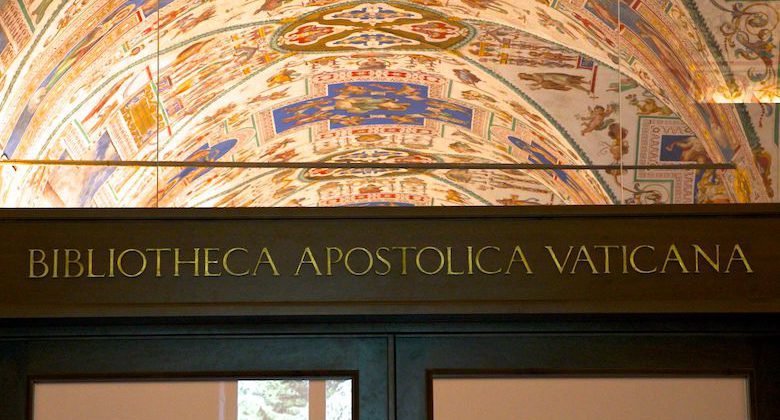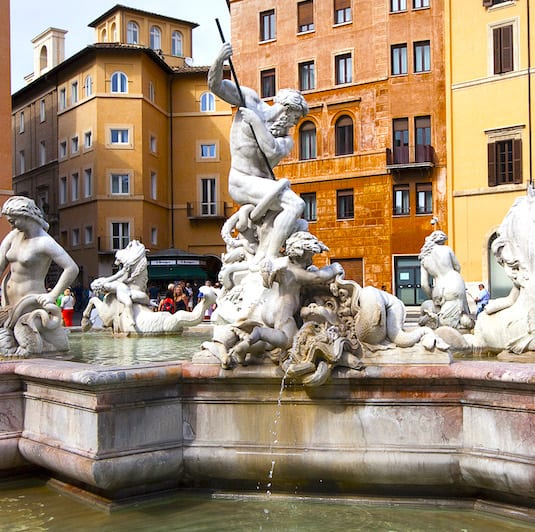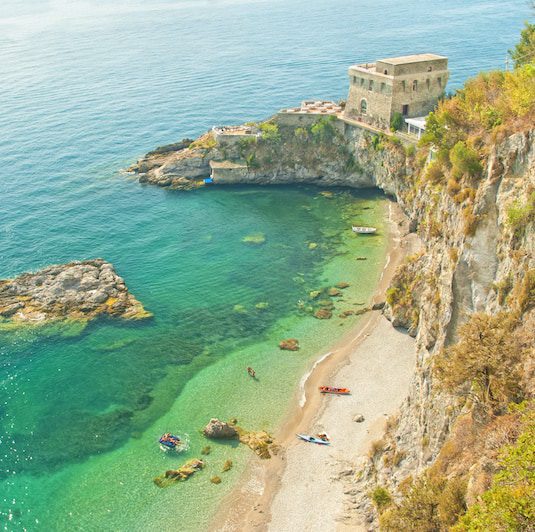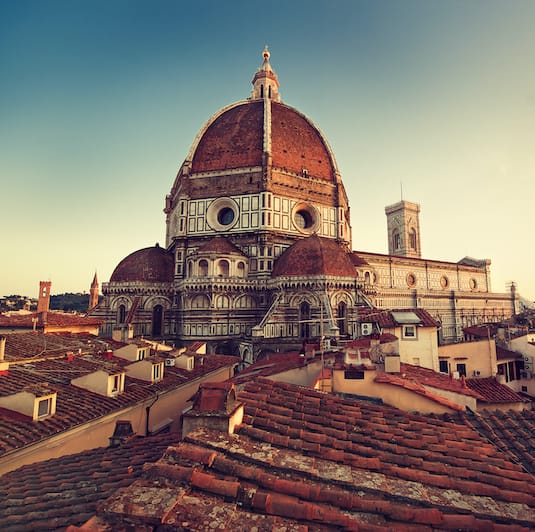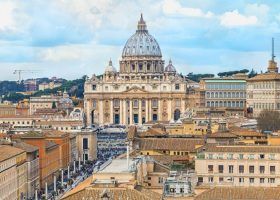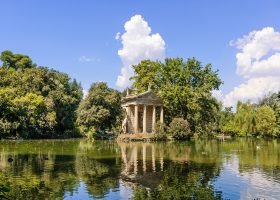You might already be familiar with the Sistine Chapel or Saint Peter’s Basilica; however, you might be less familiar with the Vatican Library. In addition to the enormous amount of art the Vatican preserves, it also boasts a major collection of books and manuscripts from almost every century. In this article, find out more about the one of the oldest Roman libraries.
Pro Tip: Planning your visit to the Vatican in Rome? Bookmark this post in your browser so you can easily find it when you’re in the city. See our guide to Vatican City for more planning resources, our top Vatican tours for a memorable trip, and how to visit the Vatican.
History of the Vatican Library
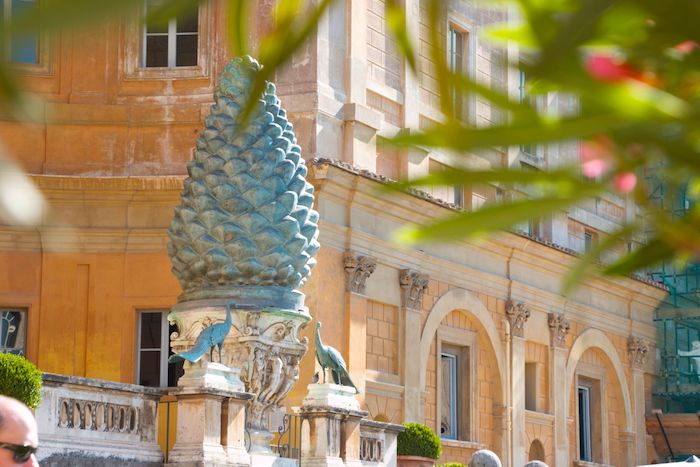
The Vatican has collected a huge number of books and manuscripts throughout the centuries. However, the first library was only created in 1451 under the guidance of Tomaso Perentucelli (Pope Niccolò V). For the first time, they began locating manuscripts in a systematic way. They also introduced a new concept for preserving these treasures.
The Vatican Library officially opened only in 1475 under the reign of Pope Sisto IV. After that date, the Vatican continued to collect a wide variety of documents and books. In 1587, they decided to move the library to a bigger space to better house the growing collection. Pope Sisto V entrusted architect Domenico Fontana with the project for this brand new building.
What’s Inside the Vatican Library?
The Vatican Library can be considered one of the biggest libraries in the world. For centuries, it has continued to collect books, manuscripts, and documents of any kind. So, it’s quite possible to find anything you might be looking for there.
Currently, the library contains more than one million books and manuscripts. Among these, the Vatican library can boast the famous “Codex Vaticanus“, the most ancient Bible manuscript ever found. This organization also preserves the largest number of the world’s incunabula from the Middle Ages, 8,500 in total and 65 on parchment.
This library doesn’t only stick to books and manuscripts. It also includes a wide variety of almost 20,000 works of art and 300,000 historical coins.
Where Is the Vatican Library?
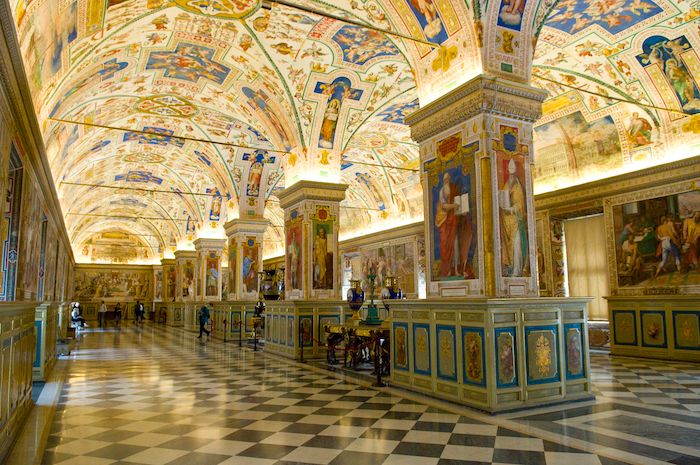
Formerly located on the ground floor of the main Vatican mansion, the library got its own building between 1587 and 1589. Pope Sisto V entrusted the project to architect Domenico Fontana.
The building, which has remained the same ever since, is located inside the Belvedere yard, in the northern area of the Vatican mansion. It’s fully decorated with splendid frescoes, produced by artists such as Andrea Lilli. On the second floor of this building, for those lucky enough to get there, it’s possible to admire the wonderful Salone Sistino that still displays the world’s largest fresco.
Popular Vatican Tours
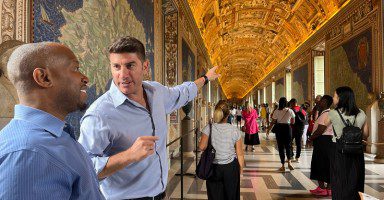
Best Selling Tour
Privileged Entrance Vatican Tour with Sistine Chapel
Without the right access, visiting the Vatican means fighting crowds, long waits, and missing the most significant rooms and works of art. Our privileged entrance tour offers more than just entry—it’s an immersive experience led by a storytelling guide who brings the Vatican to life. Skip the line and explore the Vatican Museums, including the Raphael Rooms, the Sistine Chapel, and St. Peter’s Basilica with engaging insights that make each moment memorable and meaningful.
See Prices
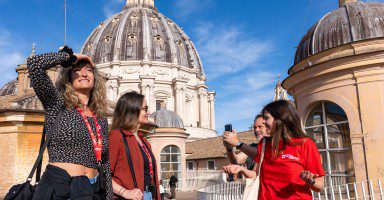
Top Rated Tour
Ultimate St. Peter’s Basilica Dome Climb and Tour with Papal Tombs
Visiting St. Peter’s Basilica and its dome on your own can mean dealing with crowds and waiting in line for hours. Our early-morning tour, led by a captivating local guide, ensures you skip the hassle with privileged access and insider knowledge, including the best times to climb for awe-inspiring views. Explore the stunning Basilica, take in breathtaking panoramas, and descend into the sacred Papal Crypts for a truly immersive experience.
See Prices
Not ready to book a tour? Check out our Vatican Guide for more info.
Who Can Visit the Vatican Library?
Due to its very precious book collection, the Vatican Library allows access to very few people. In particular, access is granted to professional researchers, university professors, PhD students with appropriate credentials. In rare cases, undergraduate students may be given access if they can show the document they need is conserved only inside the Vatican Library.
If you’re interested in visiting the library, there’s a chance you might be able to even if you don’t fit in one of those categories. The Vatican Museums make a special selection of books and manuscripts from the library collection open to the public.
The Vatican Library Museum is displayed in 13 different rooms of the library’s former location, opened in the 14th century. The museum is open to the public Monday to Saturday, from 9 am until 6 pm. It’s open even every last Sunday of the month from 9 am until 2 pm.
What Is the DigVatLib Project?
Started in 2010, the DigVatLib is a project that aims to digitalize more than 80,000 books and manuscripts from the Vatican Library, all coming from the Middle Ages and Humanistic Period. The idea arose from two different necessities: the preservation of these documents and the possibility of allowing anyone in the world to access the collection.
The plan involves the digitalization of the entire collection within two decades. Priority is given to extremely fragile books or manuscripts or those with the most scholar requests. After two decades, almost all that is preserved inside the Library will be available online.
IIIF Technologies and the DigVatLib
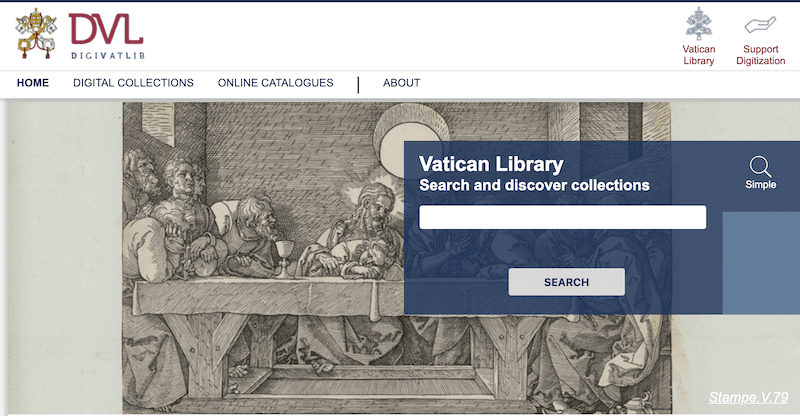
The Vatican Library has chosen to use IIIF technology for this process. By using these instruments, the final digitalized images can be accessed by people all around the globe using different software. This technology will enable the realization of one of the digitalization project’s main aims: to provide access to these precious documents to students worldwide
Thanks to this program, users will also be able to exchange notes, make suggestions, and insert their own documents into the database. Ultimately, people will not only have easy access to these amazing books and manuscripts, but they’ll also be able to interact with and exchange ideas about them. It’ll allow people to create a large digital community around the Vatican Library digital collection.
Not ready to book a tour? Check out our Vatican Guide for more info.
Here’s Where To Stay in Italy’s Most Popular Destinations
Rome, Florence, Venice, Amalfi Coast, and Capri

